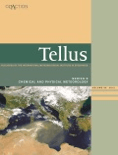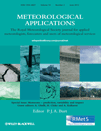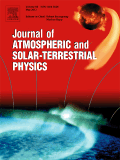
METEOROLOGY AND ATMOSPHERIC PHYSICS
Scope & Guideline
Advancing the Frontiers of Atmospheric Science
Introduction
Aims and Scopes
- Numerical Weather Prediction (NWP) and Modeling:
The journal rigorously covers advancements in numerical weather prediction techniques, including the development and application of various atmospheric models. This encompasses studies on model calibration, data assimilation, and the impact of model physics on forecast accuracy. - Climate Variability and Change:
Research on climate variability, including studies on extreme weather events, long-term trends in temperature and precipitation, and the impacts of climate change on regional and global scales, is a significant focus area of the journal. - Atmospheric Processes and Phenomena:
The journal explores various atmospheric processes such as convection, cloud formation, and precipitation dynamics. It includes studies on the physical and chemical processes that govern weather phenomena, including tropical cyclones, thunderstorms, and monsoon systems. - Remote Sensing and Data Analysis:
Innovative applications of remote sensing technologies and data analysis techniques are emphasized, particularly in the context of monitoring atmospheric parameters, evaluating precipitation, and understanding aerosol dynamics. - Impact of Urbanization and Land Use Changes:
The journal addresses the influence of urbanization and land use changes on local and regional weather patterns, including urban heat island effects and changes in precipitation distribution. - Interdisciplinary Approaches:
Interdisciplinary studies that integrate meteorology with other fields such as hydrology, agriculture, and environmental science are a unique contribution of the journal. This includes research on the interactions between atmospheric conditions and terrestrial ecosystems.
Trending and Emerging
- Artificial Intelligence and Machine Learning Applications:
There is a growing emphasis on the application of artificial intelligence and machine learning techniques in meteorology, particularly for weather forecasting, data assimilation, and predictive modeling, highlighting the journal's alignment with technological advancements. - Climate Change Impact Studies:
Research focusing on the impacts of climate change, including extreme weather events and long-term climate trends, is increasingly prevalent. This trend underscores the urgency of understanding climate dynamics in a changing world. - Integrated Environmental Studies:
The integration of meteorological research with environmental science, hydrology, and urban planning is emerging as a prominent theme, reflecting an interdisciplinary approach to addressing complex environmental challenges. - High-Resolution Modeling and Observational Studies:
There is a trend towards high-resolution modeling and detailed observational studies that aim to capture fine-scale atmospheric processes, particularly in the context of urban meteorology and localized weather phenomena. - Impact of Land-Atmosphere Interactions:
Research exploring the interactions between land surface processes and atmospheric conditions is gaining momentum, particularly in studies related to agriculture, urbanization, and ecosystem responses to climatic changes.
Declining or Waning
- Traditional Statistical Methods for Weather Prediction:
There is a noticeable decrease in the publication of studies solely relying on traditional statistical methods for weather prediction, as newer machine learning and artificial intelligence techniques gain traction. - Local-Scale Studies without Regional Context:
Research focusing narrowly on local-scale meteorological phenomena without linking to broader regional or global climatic contexts appears to be waning, as there is an increasing demand for studies that address larger-scale implications. - Descriptive Studies on Historical Weather Patterns:
Studies that primarily describe historical weather patterns without providing in-depth analysis or predictive insights are becoming less common, with a shift towards more analytical and predictive research.
Similar Journals

Atmospheric Science Letters
Fostering innovation through open-access research.Atmospheric Science Letters, published by WILEY, is a leading open-access journal in the field of Atmospheric Science. Since its establishment in 2000, it has significantly contributed to advancing knowledge related to the Earth's atmosphere, focusing on both theoretical and practical aspects. With an impressive Q2 ranking in the Atmosphere Science category as of 2023 and a Scopus rank of 62 out of 148, this journal provides a platform for researchers and professionals to share their findings and insights. The journal’s commitment to open access since 2016 ensures that cutting-edge research is accessible to a global audience, fostering collaboration and innovation in the atmospheric sciences. Addressed from its headquarters at 111 River St, Hoboken, NJ, USA, Atmospheric Science Letters is pivotal for students, researchers, and professionals seeking to stay abreast of the latest developments in this dynamic field.

Journal of Tropical Meteorology
Exploring Atmospheric Wonders in the TropicsJournal of Tropical Meteorology, published by JOURNAL OF TROPICAL METEOROLOGICAL PRESS, is a leading scholarly journal dedicated to advancing the understanding of atmospheric phenomena and meteorological patterns in tropical regions. With an ISSN of 1006-8775, this journal plays a vital role in disseminating high-quality research, focusing on critical issues such as climate variability, weather forecasting, and tropical cyclone dynamics. The journal, which is indexed in Scopus with a respectable rank in the low quartile of Q3 in Atmospheric Science, aims to provide a platform for researchers and professionals to share groundbreaking insights and foster collaboration within the scientific community. Although it follows a traditional access model, the Journal of Tropical Meteorology encourages submissions from a diverse range of disciplines, thus enriching the field with a variety of perspectives. By bridging theory and practical applications, this journal serves as an essential resource for students, researchers, and practitioners striving to expand their knowledge and contribute to the global conversation on meteorology.

Weather and Climate Dynamics
Elevating Knowledge on Weather and Climate InteractionsWeather and Climate Dynamics, an esteemed journal published by COPERNICUS GESELLSCHAFT MBH, focuses on the intricate relationships and processes governing climate and weather patterns, advancing our understanding of atmospheric sciences. Since its launch in 2020, this Open Access journal has rapidly gained recognition, achieving a commendable Q1 status in Atmospheric Science and ranking 39th out of 148 journals in the Earth and Planetary Sciences category, placing it in the 73rd percentile. Based in Germany, the journal aims to provide a platform for innovative research, sharing crucial findings that contribute to tackling global climate challenges. Researchers, professionals, and students alike are encouraged to explore the wealth of knowledge contained within its pages, as it continues to shape the discourse on weather and climate dynamics through rigorous and impactful scholarship.

JOURNAL OF GEOPHYSICAL RESEARCH-ATMOSPHERES
Illuminating groundbreaking research in geophysical studies.JOURNAL OF GEOPHYSICAL RESEARCH-ATMOSPHERES, published by the American Geophysical Union, is a leading peer-reviewed journal dedicated to advancing our understanding of atmospheric science and related disciplines. With an impressive impact factor and consistently holding a Q1 ranking across key categories including Atmospheric Science and Geophysics, this esteemed journal caters to a global audience of researchers, professionals, and students eager to explore groundbreaking studies and insights. The journal covers a comprehensive scope of topics, from climate dynamics to atmospheric processes, enhancing knowledge and informing practices within the realm of Earth and Planetary Sciences. With its strong emphasis on quality research, it remains a vital resource for those engaged in unraveling the complexities of our planet’s atmosphere. Explore this journal to stay abreast of significant developments and foster a deeper understanding in this ever-evolving field.

TELLUS SERIES B-CHEMICAL AND PHYSICAL METEOROLOGY
Unveiling the secrets of our atmosphere, one study at a time.TELLUS SERIES B-CHEMICAL AND PHYSICAL METEOROLOGY, published by Stockholm University Press, is a leading open-access journal dedicated to the advanced study of atmospheric sciences, specializing in the chemical and physical aspects of meteorology. With an ISSN of 1600-0889, this journal has been committed to disseminating high-quality research since its transition to open access in 2012, ensuring that cutting-edge discoveries are freely available to the global research community. The journal's scope encompasses a wide range of topics within meteorology, attracting contributions from both established and emerging researchers in the field. The importance of this journal lies in its ability to bridge gaps in knowledge and foster collaboration among scientists, making it an essential resource for professionals and students alike who seek to deepen their understanding of atmospheric phenomena. For submissions and further information, please refer to the Stockholm University Press website.

Earth and Space Science
Connecting Research with Global Environmental Solutions.Earth and Space Science, published by the American Geophysical Union, is a distinguished open-access journal that has profoundly impacted the realms of earth and planetary sciences as well as environmental science since its inception in 2014. With impressive rankings, including Q1 in both Earth and Planetary Sciences and Environmental Science for 2023, this journal ranks 38th out of 195 in the general Earth and planetary sciences category and 51st out of 219 in environmental science, showcasing its commitment to high-quality research dissemination. The journal serves as a vital platform for researchers, professionals, and students, fostering the exploration of critical topics and advancements within these pivotal fields. With an accessible format, researchers can benefit from the rich content available, furthering their knowledge and ensuring that groundbreaking discoveries reach a broader audience. The journal's ongoing commitment to open access aligns with contemporary trends in scholarly communication, emphasizing inclusion and collaboration in tackling pressing global challenges.

TELLUS SERIES A-DYNAMIC METEOROLOGY AND OCEANOGRAPHY
Elevating Understanding of Dynamic Earth SystemsTELLUS SERIES A-DYNAMIC METEOROLOGY AND OCEANOGRAPHY, published by Stockholm University Press, is a prestigious open-access journal that has been at the forefront of research in the fields of atmospheric science and oceanography since its inception in 1983. With an enduring commitment to disseminating high-quality, peer-reviewed research, the journal has achieved a commendable impact factor, securing its position in the Q2 category for both Atmospheric Science and Oceanography as of 2023. The journal's significant reach is reflected in its Scopus rankings, being positioned at Rank #51 in Oceanography and Rank #77 in Atmospheric Science. With open access established since 2012, TELLUS SERIES A serves not only as a vital resource for researchers and professionals in these dynamic fields but also as an inclusive platform for budding scholars and students. Engaging with this journal allows readers to stay updated on the latest developments and groundbreaking discoveries that advance our understanding of climate systems and marine environments. Its editorial ethos emphasizes the cross-disciplinary integration of atmospheric and oceanographic studies, making it an essential publication for anyone invested in environmental research and policy.

BULLETIN OF THE AMERICAN METEOROLOGICAL SOCIETY
Unveiling the complexities of climate and weather phenomena.BULLETIN OF THE AMERICAN METEOROLOGICAL SOCIETY, published by the American Meteorological Society, stands as a premier forum in the field of meteorology and atmospheric science, boasting an impressive ranking in the Q1 category for 2023. With a long-standing history dating back to 1972, this journal serves as a vital resource for researchers, practitioners, and students dedicated to advancing the understanding of atmospheric phenomena. The journal facilitates the dissemination of cutting-edge research, innovative methodologies, and significant findings that propel the scientific community forward. Although not an Open Access journal, it remains a critical publication for comprehending complex environmental interactions, climate change, and weather-related phenomena. The BULLETIN OF THE AMERICAN METEOROLOGICAL SOCIETY is essential reading for anyone invested in atmospheric sciences, providing invaluable insights that shape policy, enhance safety, and promote environmental sustainability.

METEOROLOGICAL APPLICATIONS
Bridging Disciplines to Address Global Weather IssuesMETEOROLOGICAL APPLICATIONS is an esteemed journal published by WILEY that has been a vital resource in the field of atmospheric science since its inception in 1994. With an Impact Factor indicative of its credibility and influence in the academic community, the journal has notably achieved a Q2 ranking in the 2023 category quartiles for Atmospheric Science, demonstrating its commitment to advancing knowledge in meteorology. As an Open Access journal since 2020, it provides widespread accessibility to researchers, professionals, and students, promoting collaborative efforts in the pursuit of innovative solutions to atmospheric challenges. With its dedicated focus on interdisciplinary studies in meteorology, METEOROLOGICAL APPLICATIONS serves as a crucial platform for sharing cutting-edge research and fostering dialogue among experts, thereby enhancing our understanding of weather phenomena and their global impacts. For submissions and accessing articles, the journal can be found at WILEY’s headquarters in Hoboken, NJ, representing a hub for scholarly discourse in the atmospheric sciences.

JOURNAL OF ATMOSPHERIC AND SOLAR-TERRESTRIAL PHYSICS
Illuminating the Interactions of Solar and Terrestrial ForcesJournal of Atmospheric and Solar-Terrestrial Physics, published by Pergamon-Elsevier Science Ltd, stands as a pivotal academic resource in the realms of Atmospheric Science, Geophysics, and Space and Planetary Science. With an ISSN of 1364-6826 and an E-ISSN of 1879-1824, this journal encompasses a robust collection of research findings and reviews that address the intricacies of atmospheric processes and solar-terrestrial interactions. The journal has shown consistent academic performance, earning commendable rankings in 2023, including Q3 in Atmospheric Science and Q2 in Geophysics, reflecting its importance for scholarly communication and advancement in these fields. Spanning an impressive convergence of research from 1997 to 2024, it aims to foster interdisciplinary collaboration and inspire innovations among researchers, professionals, and students. Although it currently does not offer open access, the journal is committed to disseminating high-quality content that continues to drive forward our understanding of complex environmental phenomena.